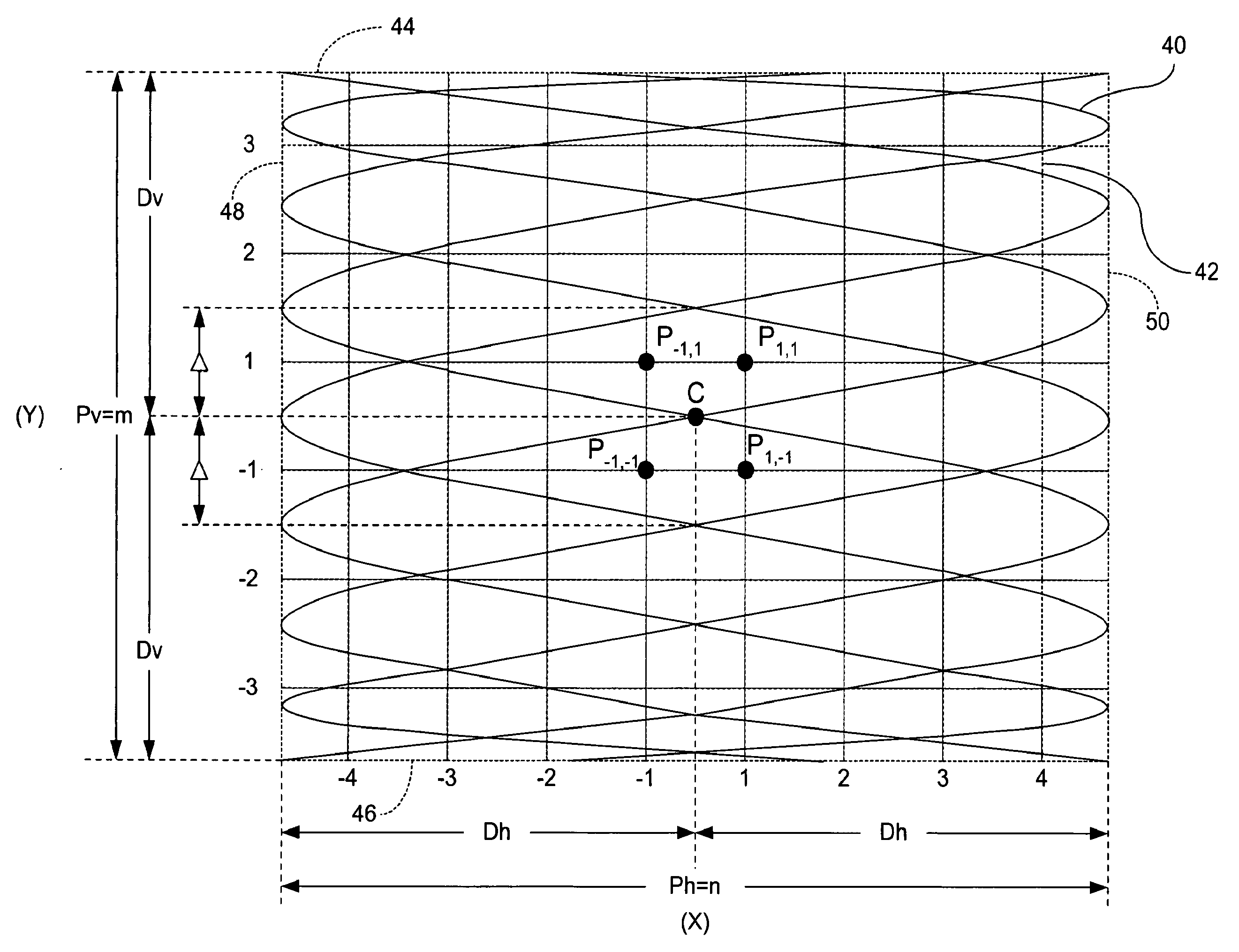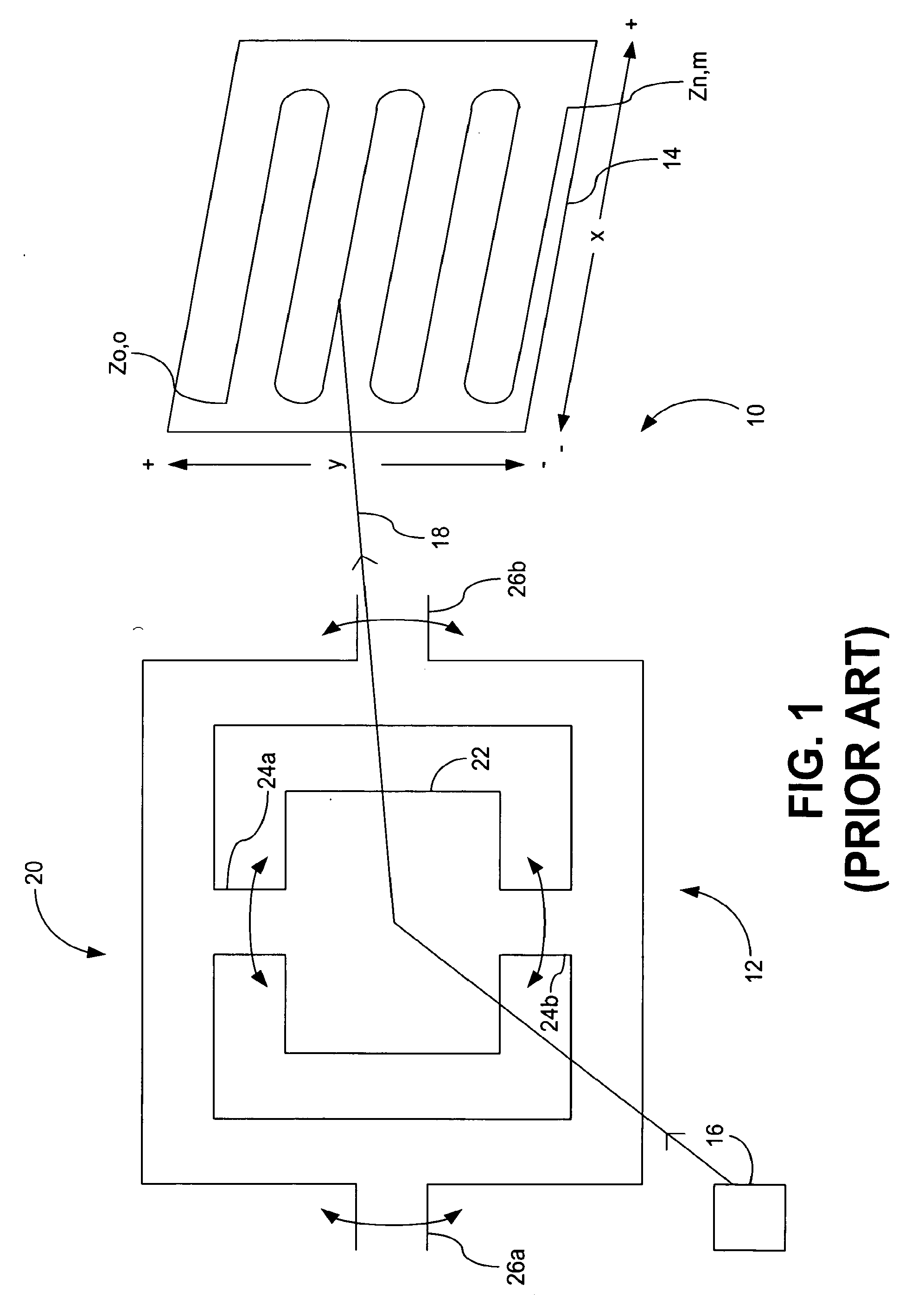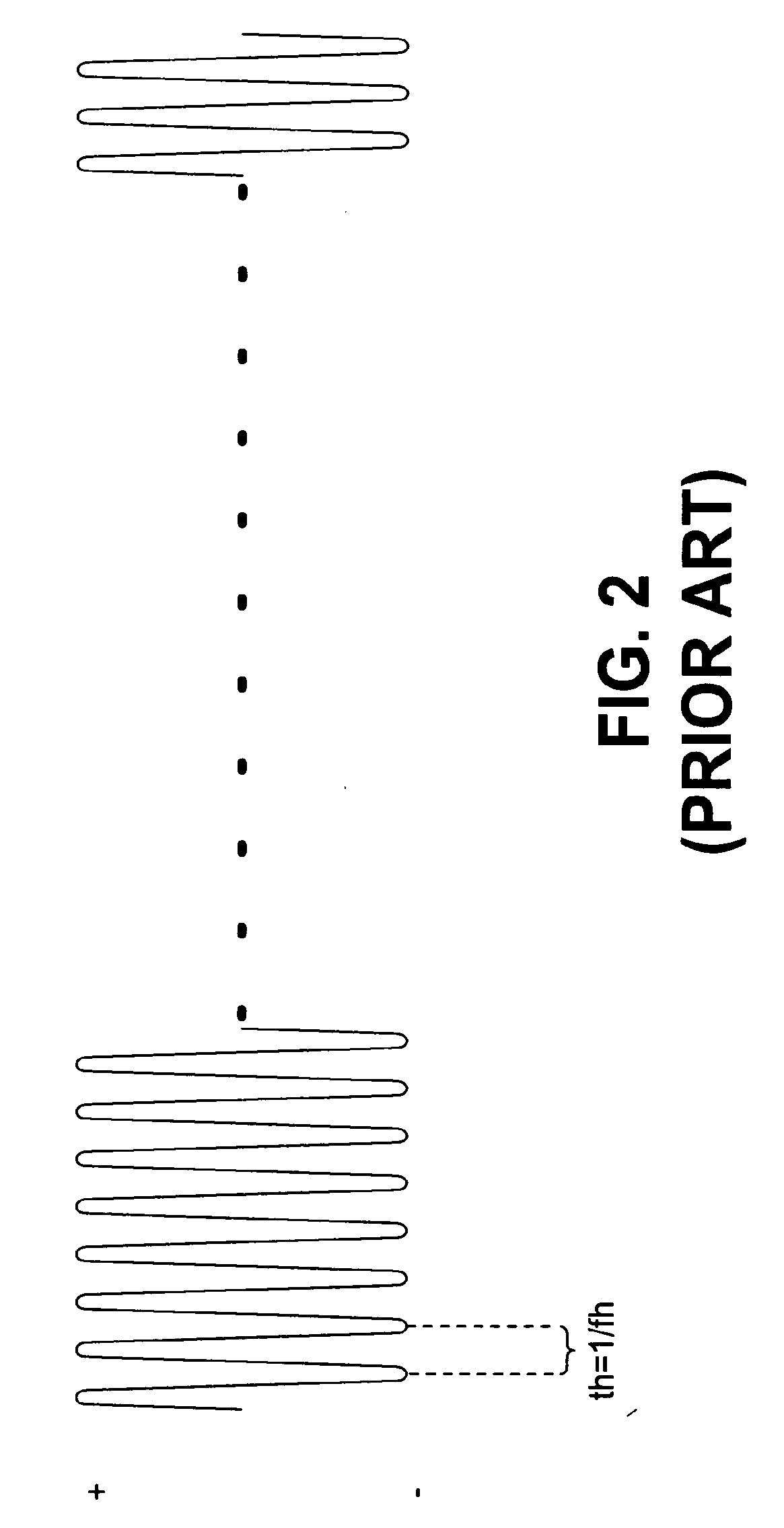Apparatus and Method for Interpolating the Intensities of Scanned Pixels from Source Pixels
a technology of interpolation and source pixels, applied in the field of electronic image generators, can solve the problems of increasing the cost, complexity, and power consumption of the system, and increasing the complexity, size and cost of image generators b>12, so as to reduce the error in beam position and reduce the number of harmonics
- Summary
- Abstract
- Description
- Claims
- Application Information
AI Technical Summary
Benefits of technology
Problems solved by technology
Method used
Image
Examples
Embodiment Construction
Bi-Sinusoidal Scanning Pattern
[0036]Referring to FIGS. 4-8, one general embodiment according to the invention is a scan assembly, similar to the scan assembly 20 (FIG. 11), that bi-directionally sweeps the image beam in the vertical (Y) dimension. That is, the image beam is “on” while the scan assembly sweeps the beam from the top to the bottom of the screen, and is also “on” while the scan assembly sweeps the beam from the bottom back to the top of the screen.
[0037]Still referring to FIGS. 4-8, in one embodiment the scan assembly sweeps an image beam sinusoidally and bi-directionally in both the horizontal (X) and vertical (Y) dimensions, although one can use a sweeping function other than a sinusoid in either of the horizontal and vertical dimensions as discussed below in conjunction with FIG. 12. For clarity, “bi-sinusoidal” is used to denote a sinusoidal and bi-directional sweep of the image beam in both the horizontal (X) and vertical (Y) dimensions. Because both of the horizon...
PUM
 Login to View More
Login to View More Abstract
Description
Claims
Application Information
 Login to View More
Login to View More - R&D
- Intellectual Property
- Life Sciences
- Materials
- Tech Scout
- Unparalleled Data Quality
- Higher Quality Content
- 60% Fewer Hallucinations
Browse by: Latest US Patents, China's latest patents, Technical Efficacy Thesaurus, Application Domain, Technology Topic, Popular Technical Reports.
© 2025 PatSnap. All rights reserved.Legal|Privacy policy|Modern Slavery Act Transparency Statement|Sitemap|About US| Contact US: help@patsnap.com



